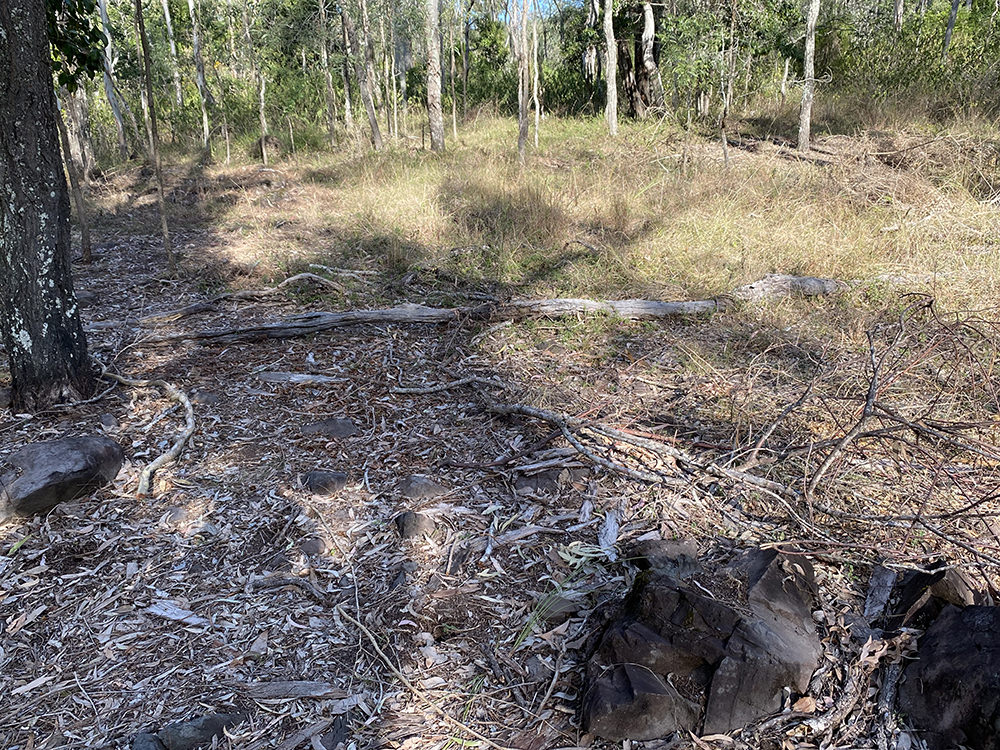
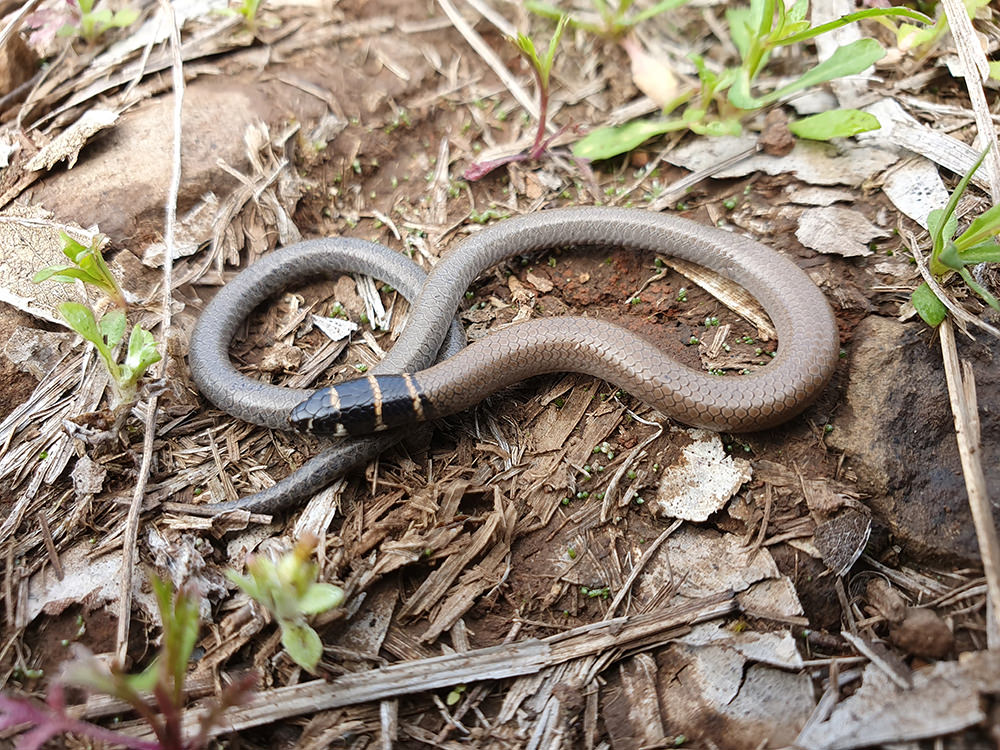
Photos by Stephen Peck.
From April 2022 to March 2023, numerous Brisbane Land for Wildlife members were involved in surveys and habitat recovery for the small legless lizard, the Collared Delma (Delma torquata). This cryptic lizard is only 19 cm in length but is a priority species under the national Threatened Species Action Plan 2022-2032 and was the focus of a recent project delivered by Pullen Pullen and Kholo Creek Catchment Groups, thanks to funding from the Australian Government.
The Collared Delma lives in open eucalypt forest and depends on a grassy understorey mixed with an open midstorey with scattered habitat rocks that are 10-30 cm average diameter, with a flat base. These habitat rocks ideally sit directly on the ground, not imbedded, as the Collared Delma slides under these rocks for warmth and protection. It would seem that Collared Delmas prefer west facing slopes and can have a very small home range across a 10×10 metre area.
The western suburbs of Brisbane such as Kenmore, Pinjarra Hills, Anstead, Mt Crosby and Karana Downs, are one of the remaining strongholds for the Collared Delma. Its historical, and possible present, distribution extends from Blackdown Tablelands through to the Bunya Mountains and Toowoomba Range.
In Brisbane, the key threats to the Collared Delma are urban development and ground-covering weeds such as Creeping Lantana (Lantana montevidensis) and predation by pets, namely cats and chickens. Surveys for the Collared Delma were undertaken on 20 properties by skilled ecologists. Two confirmed sightings were made on two Land for Wildlife properties in Pullenvale. Even though Collared Delmas were not found on the other properties, most of the properties contain suitable habitat and have good populations of ground-dwelling skinks and small invertebrates.
Surveys for Collare
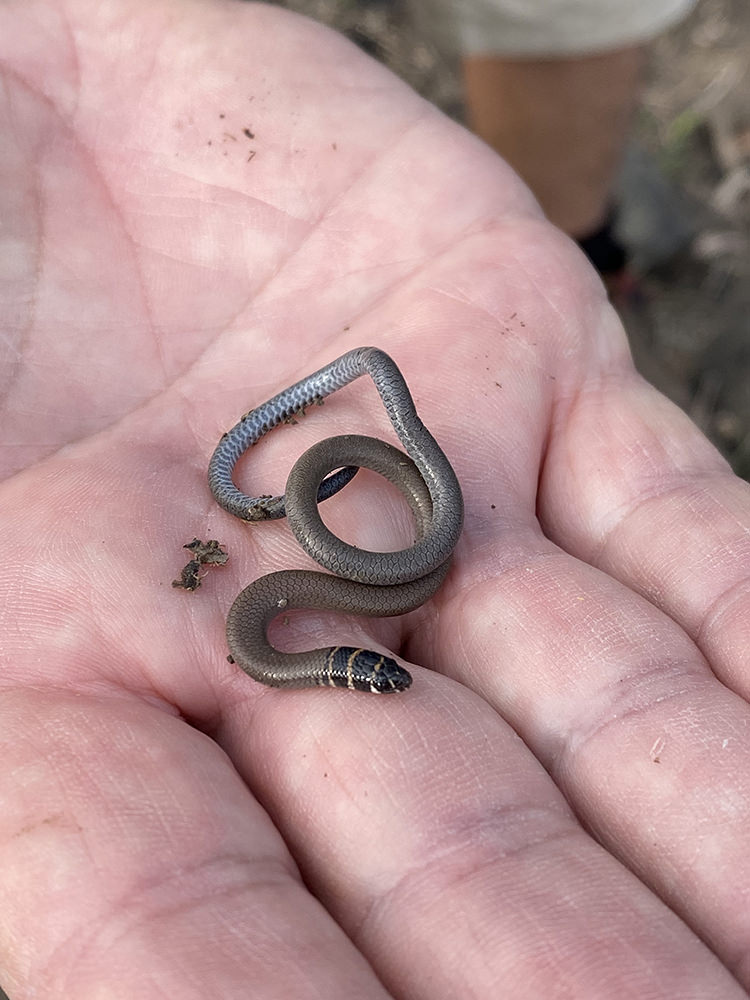
d Delmas are time consuming as every suitable habitat rock is lifted to look for animals or for shed skins underneath the rocks. All rocks were placed back in the same position as they were found. The surveys recorded a total of 25 other reptile species. Despite this intense survey effort, the detection probability for this species is quite low, given their small size and shy habits.
In addition to the survey efforts, a community workshop was held as part of this project to raise awareness about the Collared Delma, its habitat requirements, threats and actions that landholders can undertake to reduce threats. Threats to Collared Delma are similar to the threats faced by many other small reptiles, so efforts to improve and protect delma habitat will also help other species.
Habitat restoration works were also conducted on private properties with known or likely Collared Delma populations and in Anstead Bushland Reserve. Creeping Lantana was the target of weed control efforts using chemicalfree techniques. Over 900 person hours of weeding work was devoted to this project. In addition to weed control, augmentation of habitat via the introduction of rocks, mulch, native grasses and grass seed was undertaken on eight of the project properties.

Thanks to Dogwood Ecology for undertaking surveys, Bushtekniq and Oxley Creek Catchment Association for weed control activities, Friends of Anstead Bushland for ongoing bushcare activities and Brisbane City Council for liaising with Land for Wildlife members and for securing access to council reserves.
Overall, the project contributed to improving Collared Delma populations by enhancing habitat and educating local landholders about weed control and habitat maintenance. The surveys conducted provide a baseline for followup research and the habitat assessment tool will be invaluable for future projects. We hope to be reporting habitat improvements and an increasing number of Collared Delma sightings in the years to come.
The Collared Delma Survey Report and the Native Ground Cover Plants of Kholo Creek Catchment booklet are both available on the Pullen Pullen Creek Catchment Group website (go to Groups & Projects > Collared Delma Habitat Enhancement) at www.pullenpullencatchments.org.au
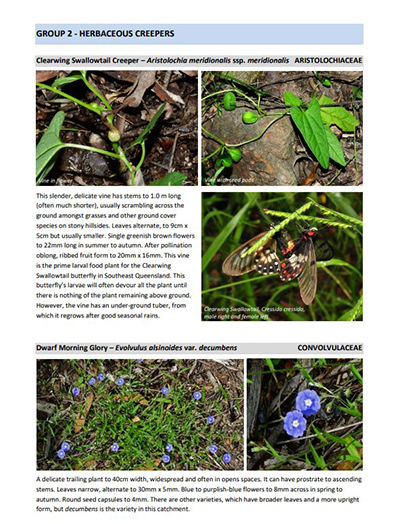
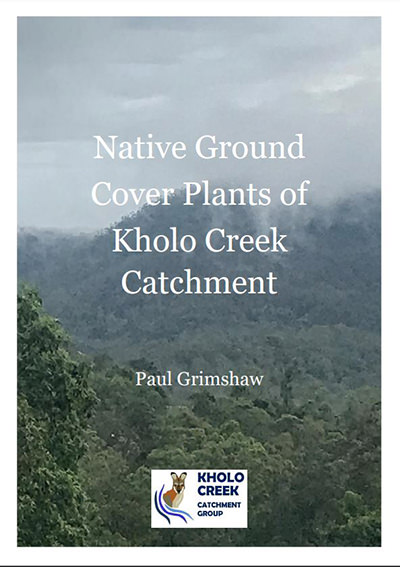
A booklet on ground cover plants written by local ecologist and Land for Wildlife member, Paul Grimshaw, was another useful and impressive outcome of this Collared Delma project. It details 58 species of native grass, lily, sedge, herb, fern and low shrub and is relevant for not only Brisbane, but across SEQ. Paul has been studying plants and ecosystems for decades and this booklet contains his first-hand understanding of these plants and their role in ecosystems and as butterfly host plants.
It is available online for free via the Pullen Pullen Creek Catchments Group website.
References and Further Information
Dept of Climate Change, Energy, the Environment and Water. Species Profile and Threats Database – Delma torquata. www.environment.gov.au
Land for Wildlife South East Queensland (2010) Landholders help protect the threatened Collared Delma. October, 4:4. Newsletter of the LfWSEQ Program.
Article by Deborah Metters, Regional Coordinator
and Gillian Whitehouse,
Pullen Pullen Creek Catchment Group
